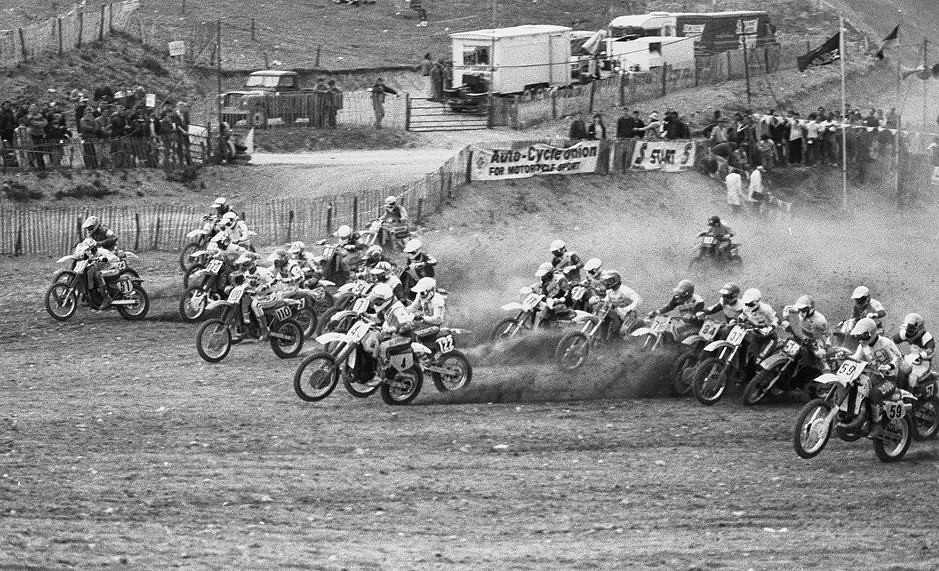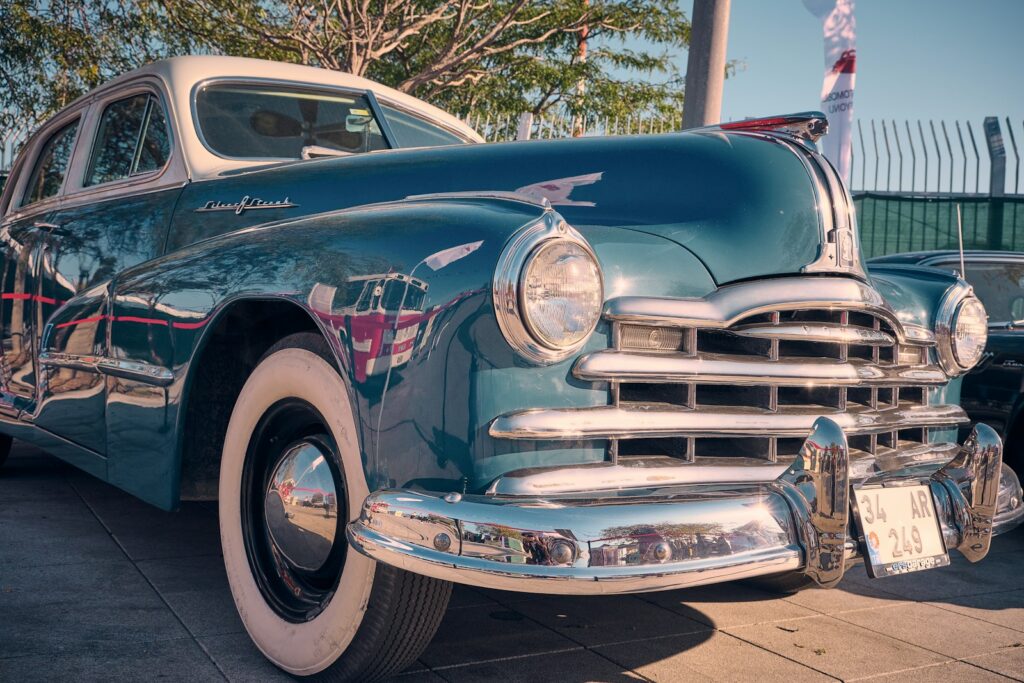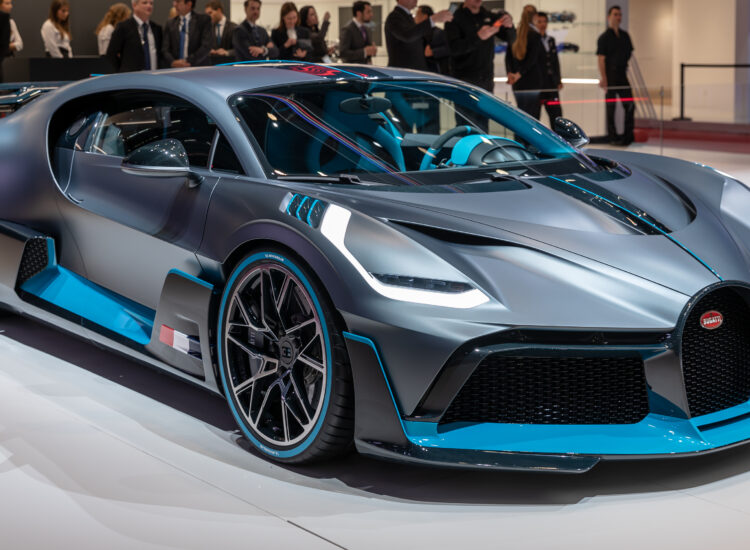
We’re used to seeing those glossy lists overflowing with automotive perfection, aren’t we? Think muscle cars flexing their massive engines, supercars that make your heart pound just by passing by, or those impossibly sleek retro beauties. But what if we told you there’s a whole other highway out there, one paved with cars that were, well, less than conventionally attractive?
America the beautiful? Not exactly, when you consider some of these contraptions that once roamed our roads. They might have made your Honda Accord look like it was ready for a runway, with their questionable design choices and often ridiculed aesthetics. Yet, despite their initial reception, these very vehicles have carved out unique places in automotive history, evolving from punchlines to prized possessions.
It’s a fascinating journey, really – how a car can go from being universally panned for its looks to becoming a sought-after collector’s item. Beauty, as they say, is in the eye of the beholder, and for these fourteen American cars, the beholder’s eye has certainly changed. Let’s rev up and explore how some of the most famously “ugly” American cars transcended their initial criticism to earn cult followings and serious collector value.
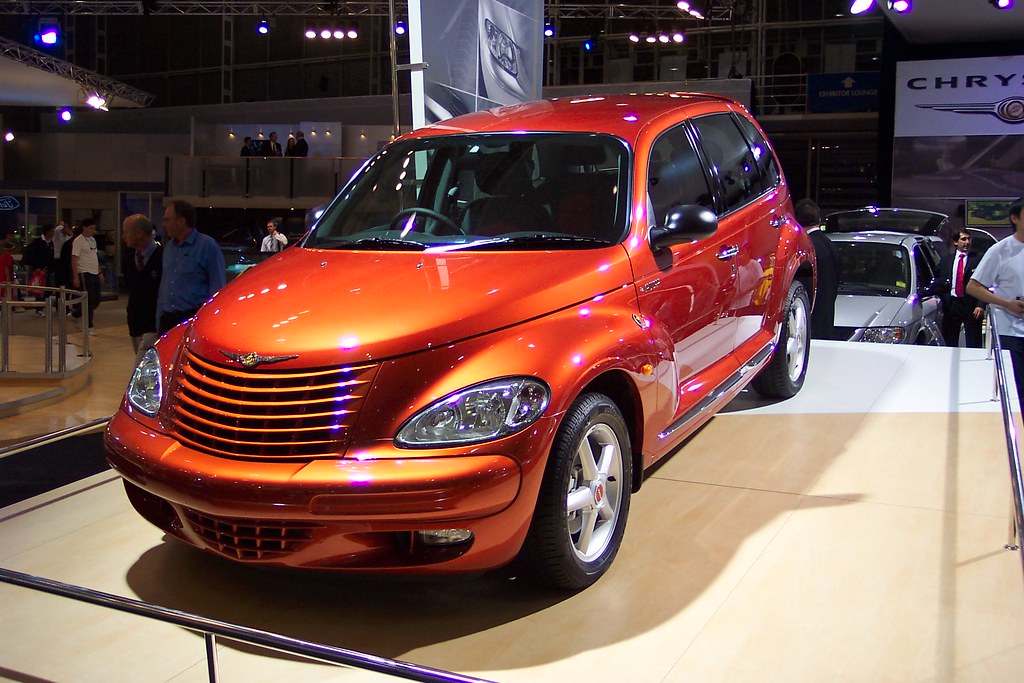
1. **Chrysler PT Cruiser** The Chrysler PT Cruiser was undeniably polarizing when it first rolled onto the scene in the early 2000s. Its retro, almost cartoonish design was a bold attempt to recapture the charm of classic American cars, but it certainly left many scratching their heads. With its high roofline and distinctively boxy rear end, it often looked like a minivan trying to masquerade as something entirely different.
Despite the heavily mixed opinions on its rather unique looks, the PT Cruiser quickly became a hit in the early 2000s. Its undeniable success was largely attributed to its surprisingly roomy interior and that undeniably quirky personality it exuded. It offered a blend of practicality and eccentric style that, for a time, resonated with a significant segment of the market.
Fast forward to today, and the PT Cruiser has embarked on an intriguing transition into a genuine collector’s item. Robert S. Miller writes for Mopar Insiders that it’s now appreciated by those who truly value its eccentric styling and its unorthodox place in automotive history. Its status as a quirky crossover makes it a nostalgic piece of early-2000s automotive culture, capturing a specific moment in design.
With production having ceased and fewer models now readily available, those who genuinely love it see it as a unique piece of Americana. That endearing, “love it or hate it” design, once its biggest critique, is precisely what now gives it significant value among a dedicated community of collectors. It’s a testament to how even the most divisive designs can find their appreciative audience over time.
Car Model Information: 2022 Honda Civic Sport
Name: Chrysler PT Cruiser
Manufacturer: Chrysler
ModelCode: PT,PG
Production: 2000–2010
ModelYears: 2001–2010
Assembly: Toluca, Mexico State
Designer: Bryan Nesbitt
Class: Compact car
BodyStyle: convertible
Platform: Chrysler PT platform
Related: Dodge SRT4,Dodge Neon
Predecessor: Dodge Neon
Successor: Lancia Delta#Third generation
Layout: Front-engine, front-wheel-drive layout
Engine: ubl
Transmission: Ultradrive#40TE
Wheelbase: 103 in
Abbr: on
Length: 168.8 in
Width: 67.1 in
Height: 63 in
Weight: 3123 lb
Categories: 2010s cars, All articles with unsourced statements, Articles with short description, Articles with unsourced statements from March 2018, Cars discontinued in 2010
Summary: The Chrysler PT Cruiser is a compact car that was built by the American company Chrysler from 2001 until 2010. Introduced as a five-door hatchback wagon, a two-door convertible variant was also made from 2005 until 2008.
Originally planned as a Plymouth model, the PT Cruiser was ultimately marketed as a Chrysler when Plymouth was discontinued. Intended to invoke 1930s aesthetics, the exterior of the PT Cruiser was designed by Bryan Nesbitt. The model received an intermediate facelift for the 2006 model year. Interior packaging was noted for its high roof, high h-point seating, and flexible cargo and passenger configurations enabled by a multi-level rear cargo shelf and rear seats a user could fold, tumble, or remove.
The PT Cruiser was produced in Mexico and Austria at the Toluca Car Assembly and Eurostar Automobilwerk factories respectively. By the end of production in July 2010, worldwide production had reached 1.35 million.
In its nameplate, PT stands for “Personal Transport” or “Personal Transportation”. PT was the PT Cruiser’s product code for the Mexican-made units.
Get more information about: Chrysler PT Cruiser
Buying a high-performing used car >>>
Brand: Chrysler Model: PT Cruiser
Price: $25,849 Mileage: 16,061 mi.
Read more about: Boomers, Get Ready to Rev! These 12 Iconic ’60s Car Models Still Drive Our Dreams
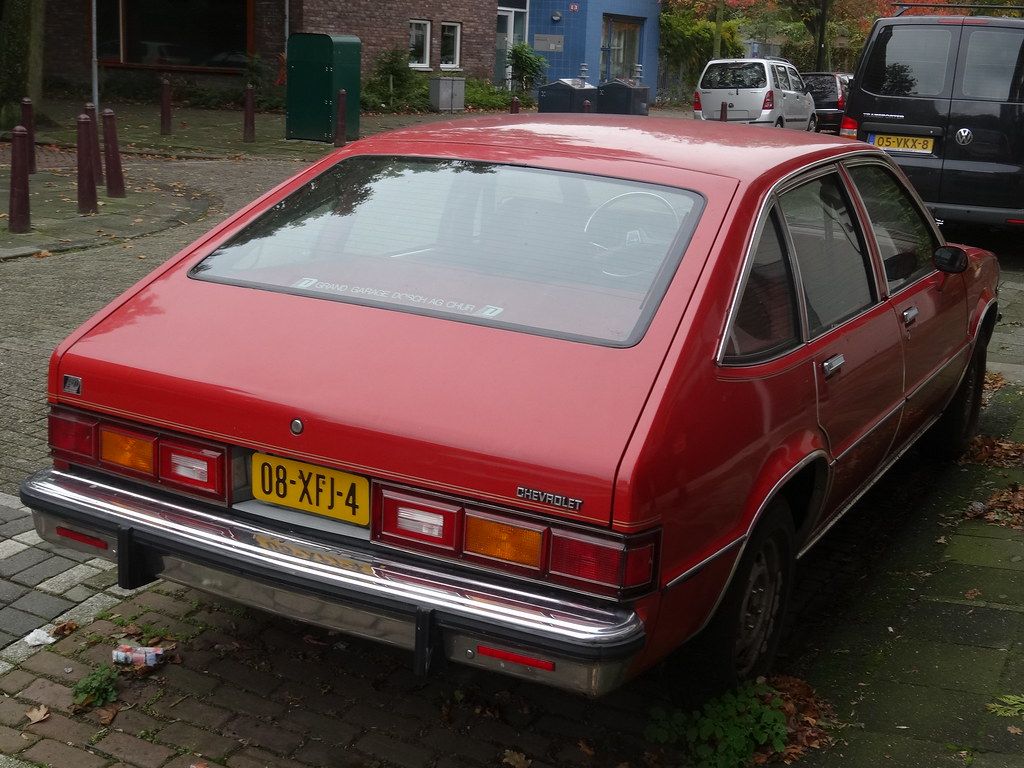
2. **Chevrolet Citation** The Chevrolet Citation is often vividly remembered as one of the quintessential “ugly American” cars of the 1980s. Its boxy, bland design, coupled with often subpar performance, made it a significant disappointment for many drivers. This was particularly true given that it was initially intended to be a futuristic take on compact cars, a vision it largely failed to embody.
Despite its rather lackluster performance and design, the Citation surprisingly debuted as a best-seller. However, this initial commercial success was quickly overshadowed by widespread criticism focusing on its poor reliability and a distinct lack of refinement. It struggled to live up to the burgeoning expectations for modern compact vehicles of the era.
Today, finding a Citation in good condition is considered a real gem for dedicated car collectors, as Jeff Lavery explains on Barn Finds. It has become a rare collector’s item, mainly because it serves as a tangible reminder of Detroit’s considerable struggle during the early years of the 1980s. It represents a pivotal, albeit difficult, moment for American automakers.
Many enthusiasts now view it as a symbolic representation of Detroit’s earnest attempt to break into the compact car market in a new and innovative way. It’s the kind of car that didn’t quite live up to its initial expectations, but precisely because of its unique historical significance and its current rarity, it has earned its spot as a quirky and unexpected collectible. The Citation’s infamy, ironically, has endowed it with a sort of cult status, making it oddly desirable to certain niche collectors.
Read more about: The 10 Cheapest EVs of 2024: A CNET Deep Dive – Are These Affordable Electric Cars Worth Your Investment?
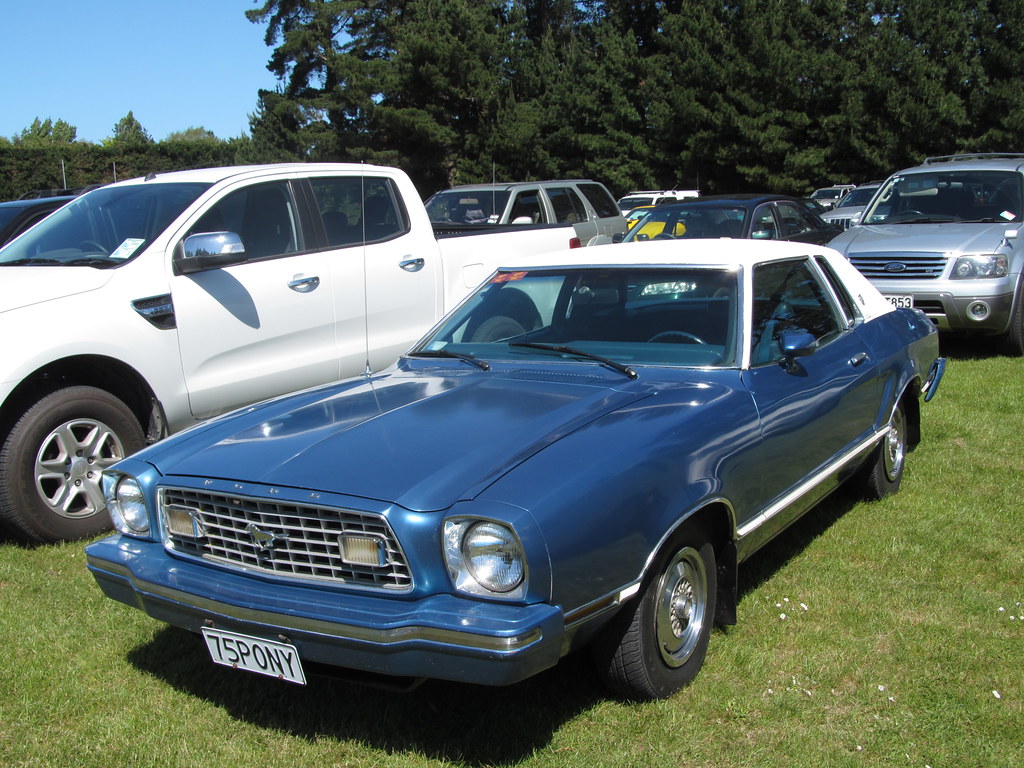
3. **Ford Mustang II** The Mustang II is frequently viewed as a low point in the storied history of the Mustang brand, marking a significant departure from the muscle car’s powerful roots. This compact, notably underpowered version of the iconic pony car was conceived and built during the tumultuous 1970s fuel crisis. This period necessitated the production of smaller, more economical cars, shifting the industry’s focus.
Unsurprisingly, it faced widespread criticism for being far less exciting and inspiring than its roaring predecessors. The styling, unfortunately, did it no favors either, often being described as uninspired and rather tame. The Mustang II’s reputation as a “soft” and generally uninspiring vehicle meant it was largely forgotten, often overshadowed in favor of the more powerful and charismatic models that came before and after it.
However, as the years have passed, the Mustang II has steadily gained recognition as a distinct and important piece of automotive history. According to the Auto Editors of Consumer Guide’s article on HowStuffWorks, its uniqueness, coupled with the fact that it was a Mustang during an incredibly challenging time for the brand, has transformed it into a legitimate collector’s item. It embodies an era of compromise and adaptation.
For dedicated fans of the brand, owning a 1975 Mustang II is akin to owning a tangible piece of the extensive Mustang legacy, even if it is a somewhat misunderstood chapter. As it becomes increasingly rarer to find these models in good and original condition, its value as a true collectible continues to steadily rise, appealing to those who appreciate the full, complex narrative of the Mustang.
Car Model Information: 2022 Honda Civic Sport
Name: Second generation
Caption: Ford Mustang II coupe
Aka: Ford Mustang II , Ford T5 (in Germany)
Class: Pony car,Subcompact car
Production: 1973–1978
ModelYears: 1974–1978
Predecessor: Ford Mustang (first generation)
Successor: Ford Mustang (third generation)
Assembly: Unbulleted list
Layout: Front-engine, rear-wheel-drive layout
BodyStyle: coupé,hatchback
Related: Ford Pinto,Ford Pinto
Manufacturer: Ford Motor Company
Engine: ubl
Transmission: ubl
Wheelbase: cvt
Length: cvt
Width: cvt
Height: cvt
Designer: Buck Mook, Dick Nesbitt
Categories: All articles with dead external links, All articles with unsourced statements, Articles with dead external links from April 2024, Articles with permanently dead external links, Articles with short description
Summary: The second-generation Ford Mustang, marketed as the Ford Mustang II, is a two- or three-door, four-passenger, front-engine/rear-drive pony car manufactured and marketed by Ford from 1973 until 1978. Introduced in September 1973 for the 1974 model year, the Mustang II arrived roughly coincident with the oil embargo of 1973 and subsequent fuel shortages. Developed under Lee Iacocca, it was an “entirely new kind of pony car.” Ford “decided to call it Mustang II, since it was a new type of pony car designed for an era of high gas prices and fuel shortages.”
The Mustang II was 490 lb (222 kg) lighter and almost 19 in (483 mm) shorter than the 1973 Mustang, and derived from the subcompact Pinto platform. While sharing a limited number of driveline components with the Pinto, the Mustang II employed an exclusive subframe, isolating its front suspension and engine mount subframe. The steering used a rack-and-pinion design.
Named Motor Trend’s 1974 Car of the Year and reaching over 1.1 million sales over four years of production, the Mustang II is noted simultaneously for both its marketing prescience and strong sales – while criticized as having abandoned essential aspects of the Mustang heritage and described, in a retrospective after 40 years since its introduction, as embodying the Malaise era.
Get more information about: Ford Mustang (second generation)
Buying a high-performing used car >>>
Brand: Ford Model: Mustang II
Price: $25,849 Mileage: 16,061 mi.
Read more about: Boomers, Get Ready to Rev! These 12 Iconic ’60s Car Models Still Drive Our Dreams
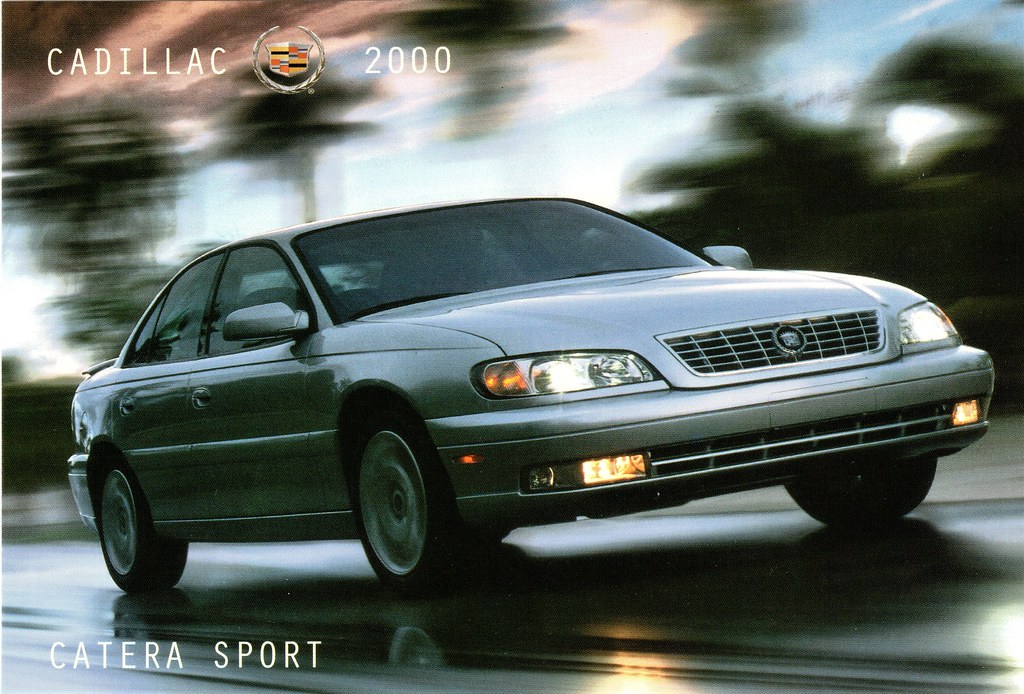
4. **Cadillac Catera** The Cadillac Catera represented a concerted attempt by Cadillac to broaden its appeal to a younger, more European-influenced market demographic. Unfortunately, it didn’t quite hit the mark on any of its ambitious goals. Its bland design, consistently lackluster performance, and an overall cheap feel left many staunch Cadillac loyalists thoroughly unimpressed and disillusioned.
This particular car, which many derisively referred to as a “poor man’s Cadillac,” faced intense criticism for failing to live up to the brand’s revered luxury image. A common complaint among owners and critics alike was that it felt significantly more like a rebadged Opel, which it largely was, rather than a truly distinctive American luxury vehicle. It blurred the lines in a way that disappointed the brand’s core audience.
Despite its less-than-stellar initial reputation and lukewarm reception, the Catera has, over time, managed to develop a rather niche but loyal following. As seen on the Cadillac Forums, it is now considered a quirky collector’s item, particularly appealing to fans of 90s luxury cars who appreciate its unique position. It represents a specific, somewhat awkward, moment in Cadillac’s history.
The Catera’s rather underwhelming legacy is, ironically, a significant part of the reason why collectors now actively seek it out. It offers a fascinating glimpse into a period when Cadillac was diligently trying, and often visibly failing, to evolve and adapt to changing market tastes. As fewer of these cars remain on the road today, the rare few that do stand out as intriguing and somewhat historically significant collector’s items, symbolizing an era of experimental luxury.
Car Model Information: 1997 Cadillac Catera Standard
Name: Cadillac Catera
Caption: 1997–1999 Catera
Manufacturer: Opel
Aka: Opel Omega
Production: 1996–2001
ModelYears: 1997–2001
Successor: Cadillac CTS
Platform: General Motors V platform (RWD)
Assembly: Rüsselsheim,State of Hesse,Germany
Related: Opel Omega
Class: Compact executive car
BodyStyle: sedan (car)
Engine: General Motors 54° V6 engine#L81,V6
Transmission: GM 4L30-E transmission,automatic transmission
Length: 194.0 in
Abbr: on
Wheelbase: 107.5 in
Width: 70.3 in
Height: 56.3 in
Weight: 3897 lb
Layout: FR layout
Categories: Articles with short description, Cadillac vehicles, Cars discontinued in 2001, Cars introduced in 1996, Commons category link from Wikidata
Summary: The Cadillac Catera is a compact executive car marketed from 1997 to 2001 model years by Cadillac over a single generation in the United States, Canada and GCC. As a rebadged variant of the Opel Omega B, the Catera was manufactured by Opel in Rüsselsheim, Germany, and was underpinned by GM’s V-body platform. Approximately 95,000 units were built and sold over five model years.
Get more information about: Cadillac Catera
Buying a high-performing used car >>>
Brand: Cadillac Model: Catera
Price: $7,500 Mileage: 67,795 mi.
Read more about: From ‘Ugly’ Ducklings to Coveted Classics: 14 American Cars That Are Now Collector’s Gold
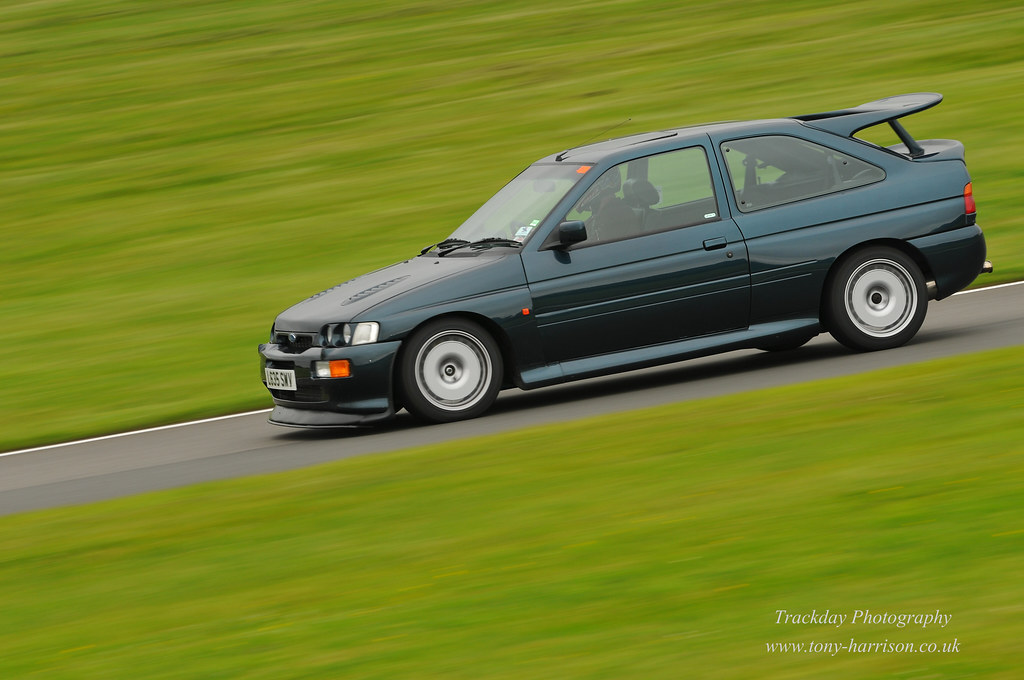
5. **Ford Escort RS Cosworth** The Ford Escort RS Cosworth was meticulously built as a high-performance rally car, but its American release was famously marked by a general lack of understanding regarding its true purpose and pedigree. In the U.S., where the standard Escort was widely perceived as a practical, entry-level, and rather mundane vehicle, the RS Cosworth struggled to make the same powerful impression it had in Europe.
Its distinctively boxy, aggressively muscular design starkly clashed with the general public’s perception of what a small hatchback should look like or represent. Consequently, in America, it remained a rare, largely misunderstood machine, mostly ignored by the broader car-buying public, save for a dedicated handful of true performance car enthusiasts who knew its capabilities.
However, in the many years since its initial release, the Escort RS Cosworth has rightfully become a beloved and revered piece of performance car history. Rob Hull, writing for This Is Money, highlights its transformation. As one of the very few cars built by Ford in this specific era that could genuinely compete with the likes of the formidable European hot hatches, it now commands a passionate cult following.
Its exceptional performance capabilities, combined with its inherent rarity in the American market, make it an ideal collector’s car. Enthusiasts have come to deeply appreciate its raw engineering and the purity of its design purpose. Its initial status as an “ugly American car,” misunderstood and out of place, has only further added to its mystique and undeniable appeal among those discerning collectors who truly understand its immense potential.
Car Model Information: 2022 Honda Civic Sport
Name: Ford Escort RS Cosworth
Manufacturer: Ford of Europe
Production: February 1992 – January 1996,7,145 produced
Assembly: Rheine
Designer: ubl
Class: Rally car,Hot hatch
BodyStyle: hatchback
Related: Ford Sierra RS Cosworth
Layout: Longitudinal engine,Front-engine, four-wheel-drive layout
Engine: ubl
Transmission: Ford MT75 transmission
Wheelbase: cvt
Length: cvt
Width: cvt
Height: cvt
Weight: cvt
Sp: uk
Predecessor: Ford Sierra RS Cosworth
Successor: Ford Focus (first generation)#RS
Categories: All-wheel-drive vehicles, All articles with unsourced statements, Articles with short description, Articles with unsourced statements from June 2025, Commons category link from Wikidata
Summary: The Ford Escort RS Cosworth is a homologation special of the fifth generation European Ford Escort. It was designed to qualify as a Group A car for the World Rally Championship in which it competed between 1993 and 1998. It was available as a road car from 1992 until 1996. The powertrain was only fitted to this version of the Escort, a longitudinally mounted Cosworth YBT, a highly tunable turbocharged 2.0 L (1,993 cc) inline-four engine which had an output of 227 PS (167 kW; 224 bhp) in standard trim.
Get more information about: Ford Escort RS Cosworth
Buying a high-performing used car >>>
Brand: Ford Model: Escort RS Cosworth
Price: $25,849 Mileage: 16,061 mi.
Read more about: Unvarnished Truth: 14 ‘Classic’ American Cars That Delivered Awful Driving Experiences
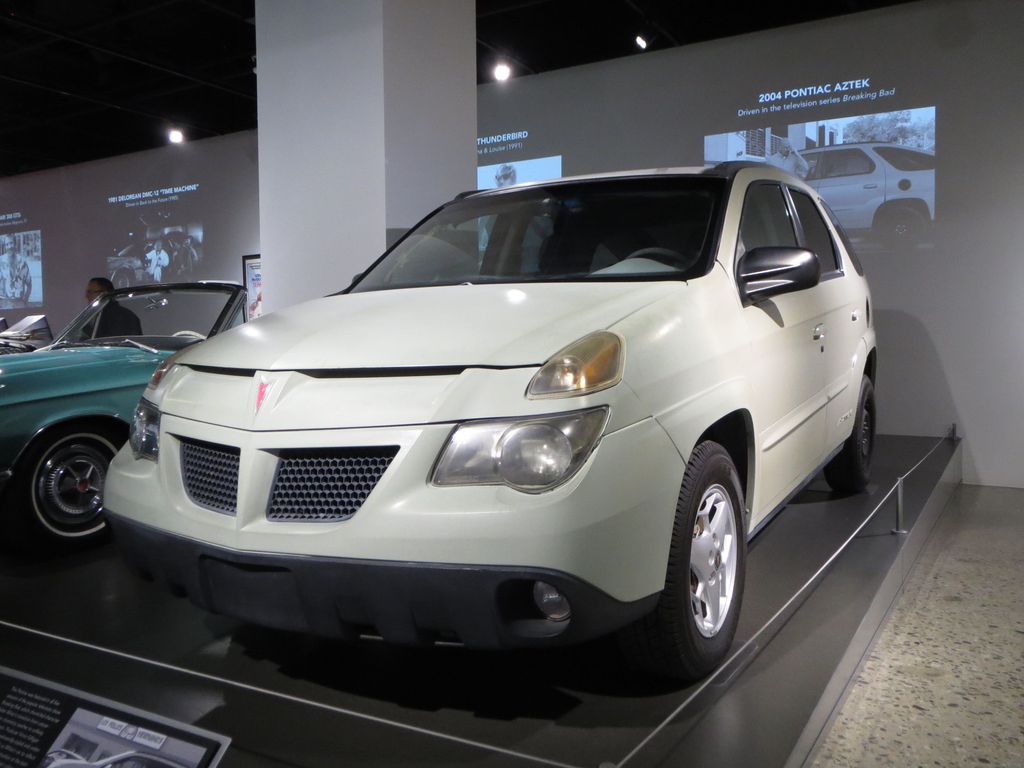
6. **Pontiac Aztek** The Pontiac Aztek is perhaps one of the most notoriously “ugly” cars in recent memory, yet it holds a uniquely fascinating and often debated place in car culture. Known for its strange combination of angular lines, a bulbous and somewhat awkward rear, and an ungainly stance, the Aztek was almost immediately reviled upon its much-anticipated release. It seemed radically out of place, like Pontiac was attempting to launch a futuristic crossover before the world was truly ready to embrace such a concept.
Its front fascia, in particular, looked less like a traditional car and more like something out of a sci-fi villain’s personal faceplate. It sported more gray cladding than an entire 2000s suburban strip mall, making it visually overwhelming and polarizing. While it was widely ridiculed by critics and consumers alike, it surprisingly managed to find a strange, devoted fanbase primarily due to its remarkable versatility and an undeniable adventurous spirit.
Today, the Aztek boasts a loyal following and has dramatically transitioned from being a mere punchline to a genuinely cherished collector’s treasure. The compelling combination of its undeniably bold design, its practical utility, and its undeniable oddball status has firmly earned it a significant place in automotive history. Many discerning collectors now consider it a “future classic” precisely because of its utterly unique and unconventional position in the market.
Beneath that… unique exterior, it offered truly innovative features like an available tent accessory that integrated seamlessly with the car, a convenient center console cooler, and seats that folded completely flat into a surprisingly usable bed. It was essentially the Swiss Army knife of crossovers, albeit one with a really questionable haircut. It carried adventure gear with genuine purpose and made cross-country camping a realistic possibility long before the “vanlife” era took hold. Pontiac even offered it with optional all-wheel drive, and its 3.4L V6 engine delivered decent grunt for its time. Those who actually lived with an Aztek quickly realized its ugly duckling exterior hid a surprising amount of utility, cementing its appeal for practical adventurers. And let’s not forget its most famous co-star: Walter White from *Breaking Bad* drove one, which inadvertently cemented the vehicle’s role in pop culture as the ultimate underdog ride. You can roast it all you want, but you will definitely remember it.
Car Model Information: 2003 Pontiac Aztek Base Fwd 4dr SUV
Name: Pontiac Aztek
Manufacturer: General Motors
Production: July 2000 – December 2004
Assembly: Ramos Arizpe
Designer: Tom Peters (chief designer: 1997)
Class: Mid-size crossover SUV
BodyStyle: SUV
Platform: GM U platform
Related: Buick Rendezvous
Layout: Front-engine, front-wheel-drive layout
Engine: General Motors 60° V6 engine#LA1,V6
Transmission: GM 4T65-E transmission,Automatic transmission
Wheelbase: 108.3 in (2,751 mm)
Length: 182.1 in (4,625 mm)
Width: 73.7 in (1,872 mm)
Height: 66.7 in (1,694 mm)
Weight: 3,779–4,043 lb (1,714–1,834 kg)
Predecessor: Pontiac Sunrunner
Successor: Pontiac Torrent
ModelYears: 2001–2005
Categories: All-wheel-drive vehicles, All articles needing additional references, All articles with unsourced statements, Articles needing additional references from October 2013, Articles with short description
Summary: The Pontiac Aztek is a mid-size crossover SUV marketed by General Motors introduced in 2000 for the model years 2001 through 2005. As a four-door crossover with front-wheel drive and optional all-wheel drive, the Aztek featured a four-speed automatic transmission with a V6 engine. Marketed by Pontiac as a “sport recreational vehicle,” the Aztek used a shortened platform shared with GM’s minivans (e.g., the Pontiac Montana) featuring 94 cubic feet of cargo room with its rear seats removed. The design employed conventional rear outswing doors rather than sliding doors, and a split rear tailgate, the lower section formed with seat indentations and cupholders. Other features included a front center console that doubled as a removable cooler, optional rear stereo controls in the cargo area, optional sliding cargo floor with grocery compartments, and optional camping package with an attachable tent and air mattress.
Get more information about: Pontiac Aztek
Buying a high-performing used car >>>
Brand: Pontiac Model: Aztek
Price: $1,999 Mileage: 157,677 mi.
Read more about: From ‘Ugly’ Ducklings to Coveted Classics: 14 American Cars That Are Now Collector’s Gold
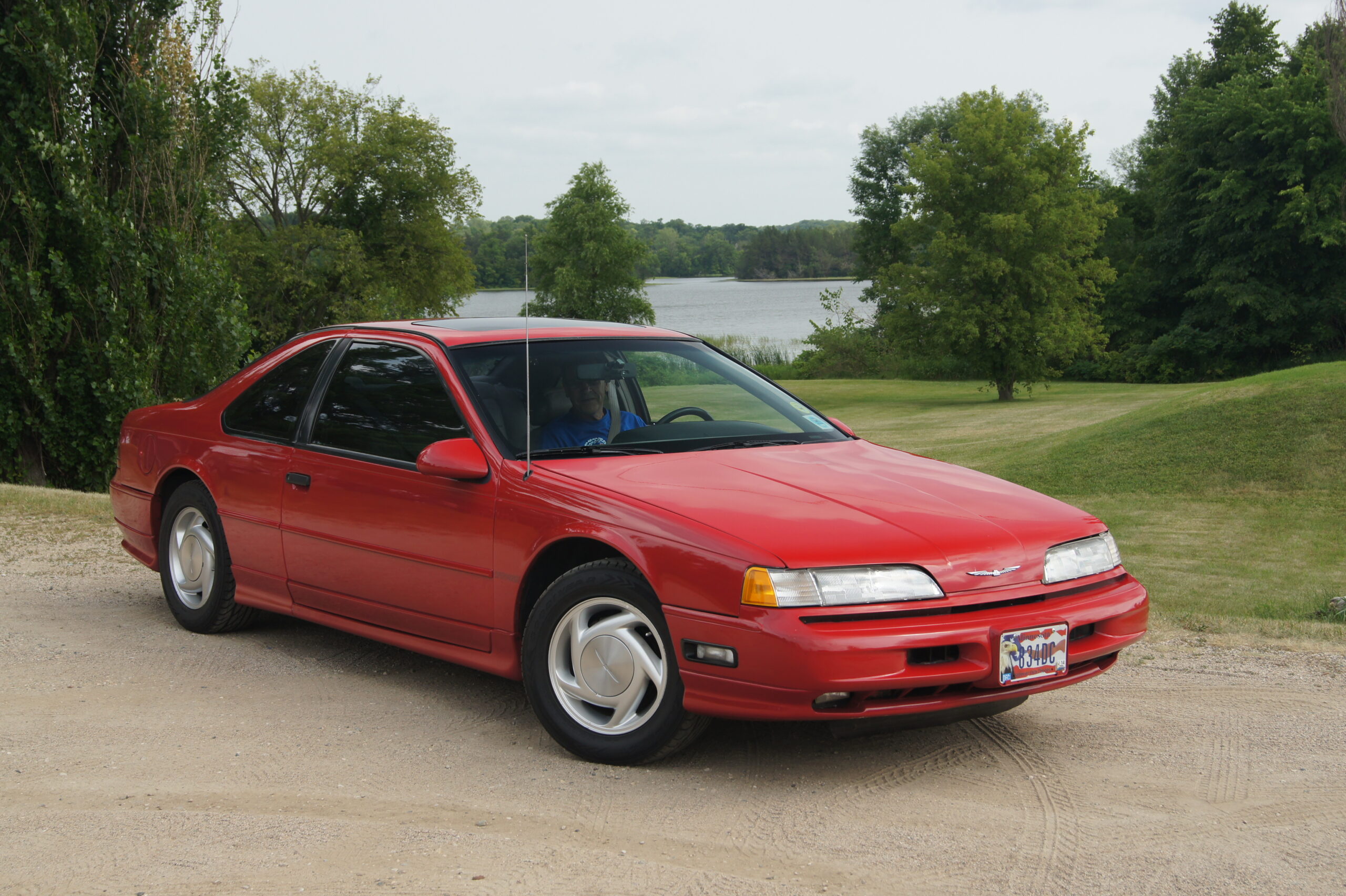
7. **Ford Thunderbird Super Coupe** The Ford Thunderbird Super Coupe represented a determined attempt to seamlessly combine luxury and high performance within a single, ostensibly affordable package. Unfortunately, the Super Coupe’s notable heavy weight and a persistent lack of refinement rendered it a less-than-stellar offering within the highly competitive high-performance sedan market of its time. Its rather boxy styling and somewhat clunky design certainly didn’t help matters much.
Consequently, it largely failed to capture the widespread attention of most car buyers, often blending into the automotive background. Adding to its woes, the Super Coupe came equipped with a supercharged V6 engine that, for many, promised significantly more raw power and excitement than it could ultimately deliver. This often left many drivers feeling distinctly disappointed by its overall performance.
However, as time has passed and perspectives have shifted, the Thunderbird Super Coupe is now increasingly recognized as a truly underrated classic. As fewer and fewer models remain in existence, dedicated collectors have begun to genuinely appreciate it for its earnest attempt at blending sporty driving dynamics with comfortable luxury. It represents a specific design philosophy from its era.
The car’s somewhat limited production numbers, combined with its unique and somewhat awkward place in the broader history of American performance vehicles, undeniably make it a valuable and intriguing find for enthusiasts. Fans of Ford’s unique, often quirky cars from the late 80s and early 90s consider it a genuine gem, even if it might still be a bit of an acquired taste for the casual observer. Its story is one of a slow-burn appreciation.
Car Model Information: 2003 Ford Thunderbird
Name: Ford Thunderbird
Caption: 1957 Thunderbird
Manufacturer: Ford Motor Company
Production: unbulleted list
ModelYears: unbulleted list
Class: unbulleted list
Layout: Front-engine, rear-wheel drive layout
Categories: 1960s cars, 1970s cars, 1980s cars, 1990s cars, 2000s cars
Summary: The Ford Thunderbird is a personal luxury car manufactured and marketed by Ford Motor Company for model years 1955 to 2005, with a hiatus from 1998 to 2001.
Ultimately gaining a broadly used colloquial nickname, the T-Bird, the model was introduced as a two-seat convertible, subsequently offered variously in a host of body styles including as a four-seat hardtop coupe, four-seat convertible, five-seat convertible and hardtop, four-door pillared hardtop sedan, six-passenger hardtop coupe, and five-passenger pillared coupe, before returning in its final generation, again as a two-seat convertible.
At its inception, Ford targeted the two-seat Thunderbird as an upscale model. The 1958 model year design introduced a rear seat and arguably marked the expansion of a market segment that came to be known as personal luxury cars, positioned to emphasize comfort and convenience over handling and high-speed performance.
Get more information about: Ford Thunderbird
Buying a high-performing used car >>>
Brand: Ford Model: Thunderbird
Price: $14,500 Mileage: 49,430 mi.
Read more about: Don’t Fall for the Hype: The 15 Cars That Look Absolutely Stunning But Drive Terribly

8. **Dodge Rampage (1984)**The Dodge Rampage, oh boy, what a ride! It was this wonderfully weird hybrid, a true automotive Frankenstein monster that bravely tried to fuse the practicality of a pickup truck with the everyday compactness of a hatchback. Naturally, its strange looks and awkward design had pretty much everyone scratching their heads, wondering exactly what they were looking at.
Critics, bless their hearts, just couldn’t decide if it was a truck, a car, or perhaps a secret government experiment gone wrong. As you can imagine, it never really found its sweet spot in the market, struggling to define its purpose. It was slow, a bit underpowered, and frankly, not exactly the heavy-duty hauler anyone looking for a “real” truck was dreaming of.
But guess what? Despite all its glorious shortcomings, the Dodge Rampage has totally become a sought-after collectible! It’s all thanks to enthusiasts who absolutely adore its undeniable weirdness. This unique blend of utility and oddball style has truly carved out a special little niche for it in automotive history. It’s the kind of car that just screams “personality!”
With only a limited number ever hitting the roads, it’s now seen as a genuine rarity. Collectors on the hunt for those quirky, unforgettable vehicles from the 80s simply cherish it. Adding a Rampage to your collection is like adding a fun element of surprise and a big dose of nostalgia, making it a valuable, and seriously fun, find.
Car Model Information: 1984 Dodge Rampage Base
Caption: 1982 Dodge Rampage
Name: Dodge Rampage
Aka: Plymouth Scamp
Manufacturer: Dodge
Production: 1982–1984
ModelYears: 1982–1984
Assembly: Belvidere, Illinois
Class: Coupé utility
BodyStyle: 2-door truck
Engine: Chrysler 2.2 & 2.5 engine#2.2,Inline-four engine
Transmission: Unbulleted list
Platform: Chrysler L platform
Layout: Front-engine, front-wheel-drive layout
Wheelbase: 104.2 in (2,647 mm)
Length: 183.8 in (4,669 mm)
Width: 66.8 in (1,696 mm)
Height: 51.7 in (1,314 mm)
Related: Unbulleted list
Weight: 2,293 lbs (1,040 kg)
Categories: Articles with short description, Cars discontinued in 1984, Cars introduced in 1982, Commons category link is on Wikidata, Coupé utilities
Summary: The Dodge Rampage was a subcompact unibody coupe utility based on Chrysler’s L platform and manufactured and marketed from 1982 to 1984 model years. Plymouth marketed a rebadged variant for model year 1983, as the Scamp.
The Rampage combined the handling and passenger carrying characteristics of a traditional passenger car with the open-bed versatility and load capacity of a small pickup truck, similar to its competitors: the Volkswagen Rabbit Sportruck and Subaru BRAT.
Get more information about: Dodge Rampage
Buying a high-performing used car >>>
Brand: Dodge Model: Rampage
Price: $8,995 Mileage: 71,544 mi.
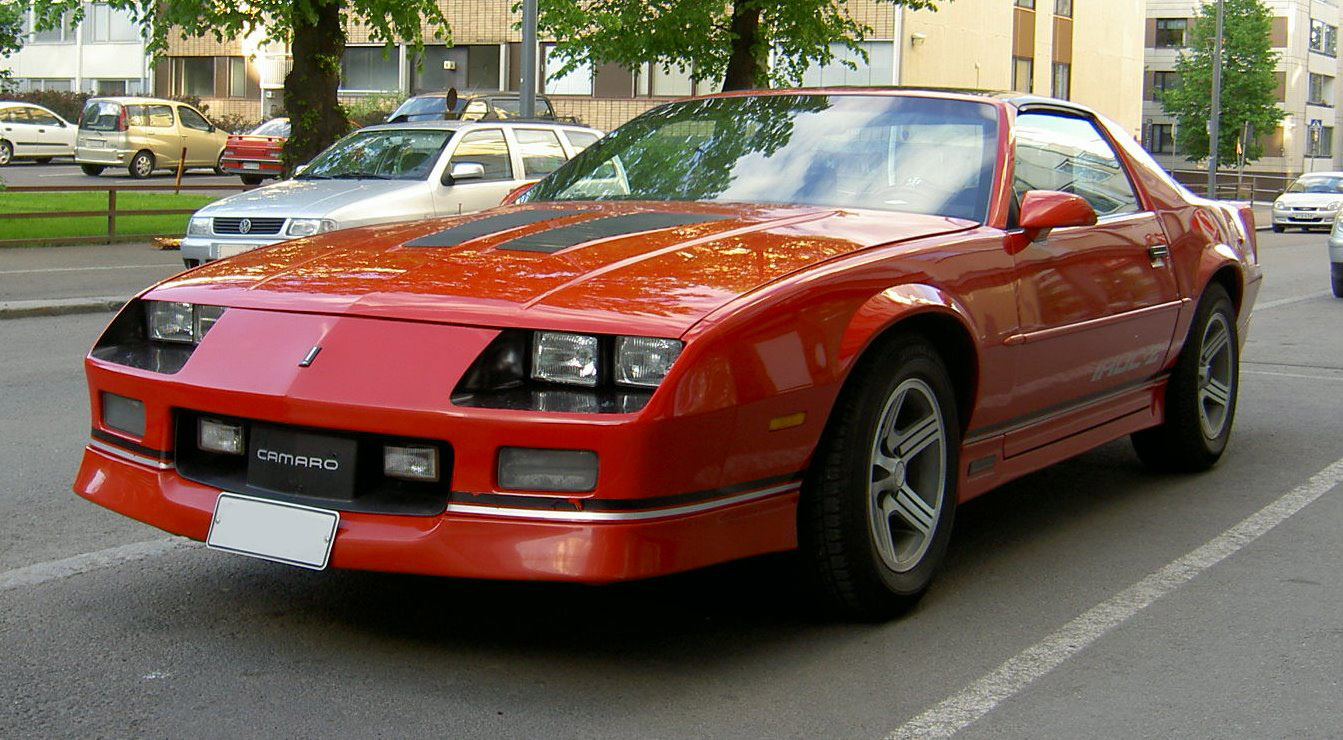
9. **Chevrolet Camaro IROC-Z (1985)**Alright, gearheads, let’s talk about the 1985 Chevrolet Camaro IROC-Z. This baby was supposed to be the high-performance king of the iconic Camaro line, but let’s be real, it didn’t quite hit the high notes muscle car fans were expecting. With a somewhat underwhelming 5.0-liter V8 engine and a design that felt a bit over-styled and, well, boxy, it seemed like a valiant but ultimately failed attempt to bring back the glory days of the Camaro.
It definitely got overshadowed by other, better-performing competitors of the era, leaving a lot of fans feeling pretty disappointed by its lack of raw excitement. While it carried the legendary IROC-Z name, signifying its connection to the International Race of Champions, its on-road performance often felt more like a gentle jog than a full-throttle sprint, especially when compared to its powerful ancestors.
But here’s the cool part: the IROC-Z has absolutely found a special place in the hearts of car collectors who appreciate its quirky blend of aggressive style and, dare we say, its charming underperformance. It’s truly seen as an iconic piece of 1980s muscle car culture, a vibrant symbol of a time when muscle cars were earnestly trying to adapt to a world that was suddenly much more fuel-conscious.
As fewer and fewer of these machines remain in tip-top condition, their rarity has naturally skyrocketed, making them even more desirable. Today, it’s considered a super fun, wonderfully nostalgic ride for anyone who can genuinely appreciate its unique flaws and its truly distinct spot in automotive history. It’s a testament that sometimes, perfectly imperfect is exactly what you need.
Car Model Information: 2022 Honda Civic Sport
Name: Chevrolet Camaro (third generation)
Manufacturer: Chevrolet
Production: October 12, 1981 – August 27, 1992
ModelYears: 1982–1992
Assembly: Van Nuys Assembly,Norwood Assembly
Designer: Jerry Palmer
Class: Pony car,Muscle car
BodyStyle: liftback,convertible (car)
Platform: GM F platform
Related: Pontiac Firebird (third generation)
Layout: FR layout
Engine: {{convert,151,cid,L,1,abbr=on,Iron Duke engine,Inline-four engine
Abbr: on
Transmission: Manual transmission,Manual transmission,Automatic transmission,Automatic transmission
Wheelbase: 2565 mm
Length: 4877 mm
Width: 1850 mm
Height: 1275 mm
Weight: convert
Predecessor: Chevrolet Camaro (second generation)
Successor: Chevrolet Camaro (fourth generation)
Caption: Chevrolet Camaro IROC-Z
Categories: 1990s cars, All articles needing additional references, Articles needing additional references from February 2014, Articles needing additional references from November 2009, Articles with short description
Summary: The third-generation Chevrolet Camaro is an American pony car which was introduced for the 1982 model year by Chevrolet. It continued to use General Motors’ F-body platform and produced a “20th Anniversary Commemorative Edition” for 1987 and “25th Anniversary Heritage Edition” for 1992. These were also the first Camaros with factory fuel injection, four-speed automatic transmissions, five-speed manual transmissions, four-cylinder engines, 16-inch wheels, and hatchback bodies. For 1987 a convertible Camaro was reintroduced, converted by ASC in relatively small numbers. The third-generation Camaro continued through the 1992 model year.
Get more information about: Chevrolet Camaro (third generation)
Buying a high-performing used car >>>
Brand: Chevrolet Model: Camaro IROC-Z
Price: $25,849 Mileage: 16,061 mi.
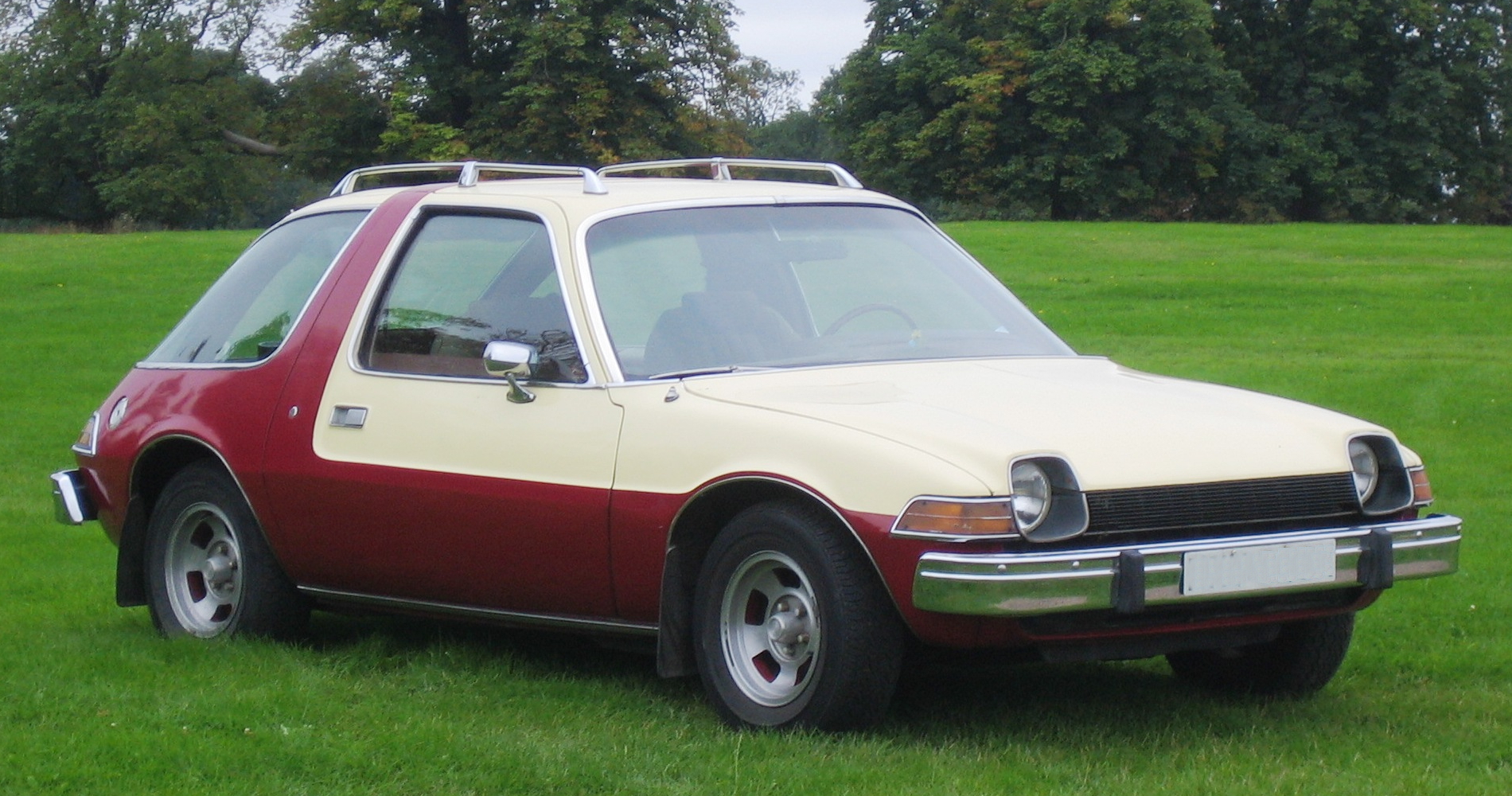
10. **AMC Pacer (1978)**Talk about making an entrance! The AMC Pacer, with its absolutely wild bubble-shaped design and super wide stance, felt more like a bold experiment straight out of a mad scientist’s lab than a serious production vehicle. Its ridiculously odd proportions and incredibly unconventional styling made it an instant cult favorite among those who just adored quirky cars. It really was like nothing else on the road!
For the average driver, though, it was a total head-scratcher. It didn’t exactly scream “practical” or “stylish” in the traditional sense. But let’s be honest, that’s precisely where its unique charm lay! It had this undeniable “oomph” that allowed it to magnificently stand out in a sea of otherwise utterly conventional cars. It was definitely a conversation starter, whether you liked it or not!
Over the many years since its debut, the AMC Pacer has rightfully earned a stellar reputation as a truly unique collectible. Many passionate enthusiasts view it as a beaming symbol of the gloriously experimental nature of the 1970s American car industry. Collectors absolutely adore its distinctive look, and because of its genuine cult classic status, it has garnered a dedicated niche following. Finding a beautifully preserved Pacer today is truly a rare and exciting treat for car enthusiasts searching for something genuinely different and unforgettable.
Read more about: Beyond the Mainstream: 14 Unforgettable ’70s Classic Cars That Shaped Automotive History for Enthusiasts

11. **Buick Roadmaster Wagon (1996)**Ah, the Buick Roadmaster Wagon – a true blast from the past, in the best possible way! This was a classic American station wagon through and through, complete with that iconic wood paneling and a gloriously long, wonderfully boxy body. By the time it gracefully rolled out in 1996, station wagons were, let’s just say, a bit out of fashion. So, the Roadmaster felt a little like a charming relic from a bygone era, like a cherished family photo album on wheels.
It was undeniably large, perhaps a tad impractical for some, and certainly didn’t boast much in the way of cutting-edge modern design or fuel efficiency. But here’s the secret: it had a fiercely loyal following! And why? Because of its unbeatable old-school charm and that absolutely immense cargo space. This car could swallow anything you threw at it, from camping gear to a small army of kids.
Today, this magnificent Roadmaster Wagon is rightfully considered a retro treasure, a shining example of American automotive nostalgia. Collectors absolutely swoon over its classic styling, its rock-solid, heavy-duty build, and that undeniable nostalgic vibe it exudes. This unique combination of spacious luxury and sheer utility makes it a perfect, must-have addition for anyone curating a collection of classic American cars.
The Roadmaster is one of those fantastic vehicles that, even though it was initially somewhat overlooked, has unequivocally found its place deep in the hearts of those who genuinely appreciate its rich history and wonderfully unique character. It’s a reminder that sometimes, old-school cool never truly goes out of style.
Car Model Information: 2022 Honda Civic Sport
Name: Buick Roadmaster
Predecessor: Buick Master Six
Manufacturer: Buick
Production: 1935–1942,1946–1958,1990–1996
ModelYears: 1936–1942,1946–1958,1991–1996
Class: Full-size car
Layout: FR layout
Categories: 1950s cars, 1980s cars, 1990s cars, All articles with unsourced statements, Articles with short description
Summary: The Buick Roadmaster is an automobile built by Buick from 1936 until 1942, from 1946 until 1958, and then again from 1991 until 1996. Roadmasters produced between 1936 and 1958 were built on Buick’s longest non-limousine wheelbase and shared their basic structure with the entry-level Cadillac Series 65, the Buick Limited, and after 1940, the Oldsmobile 98. Between 1946 and 1957, the Roadmaster served as Buick’s flagship.
After being resurrected in 1991, the Roadmaster became the marque’s largest vehicle, measuring 10 in (254 mm) longer with a 5 in (127 mm) greater wheelbase than the C-body Buick Park Avenue. This generation was the first in Roadmaster history to be built on the General Motors B-body platform rather than the C-body, which had traditionally been reserved for GM’s largest and most opulent models that were not Cadillacs.
A Buick Roadmaster Estate station wagon was introduced in 1947 and was manufactured in several generations through 1996. The final run of 1991-1996 Roadmasters shared powertrains and platforms with the Chevrolet Caprice, Cadillac Fleetwood, and Oldsmobile Custom Cruiser.
Get more information about: Buick Roadmaster
Buying a high-performing used car >>>
Brand: Buick Model: Roadmaster Wagon
Price: $25,849 Mileage: 16,061 mi.
Read more about: Remember These? The 11 Everyday 1985 Cars That Are Now Absolute Classics You’ll Wish You Still Had
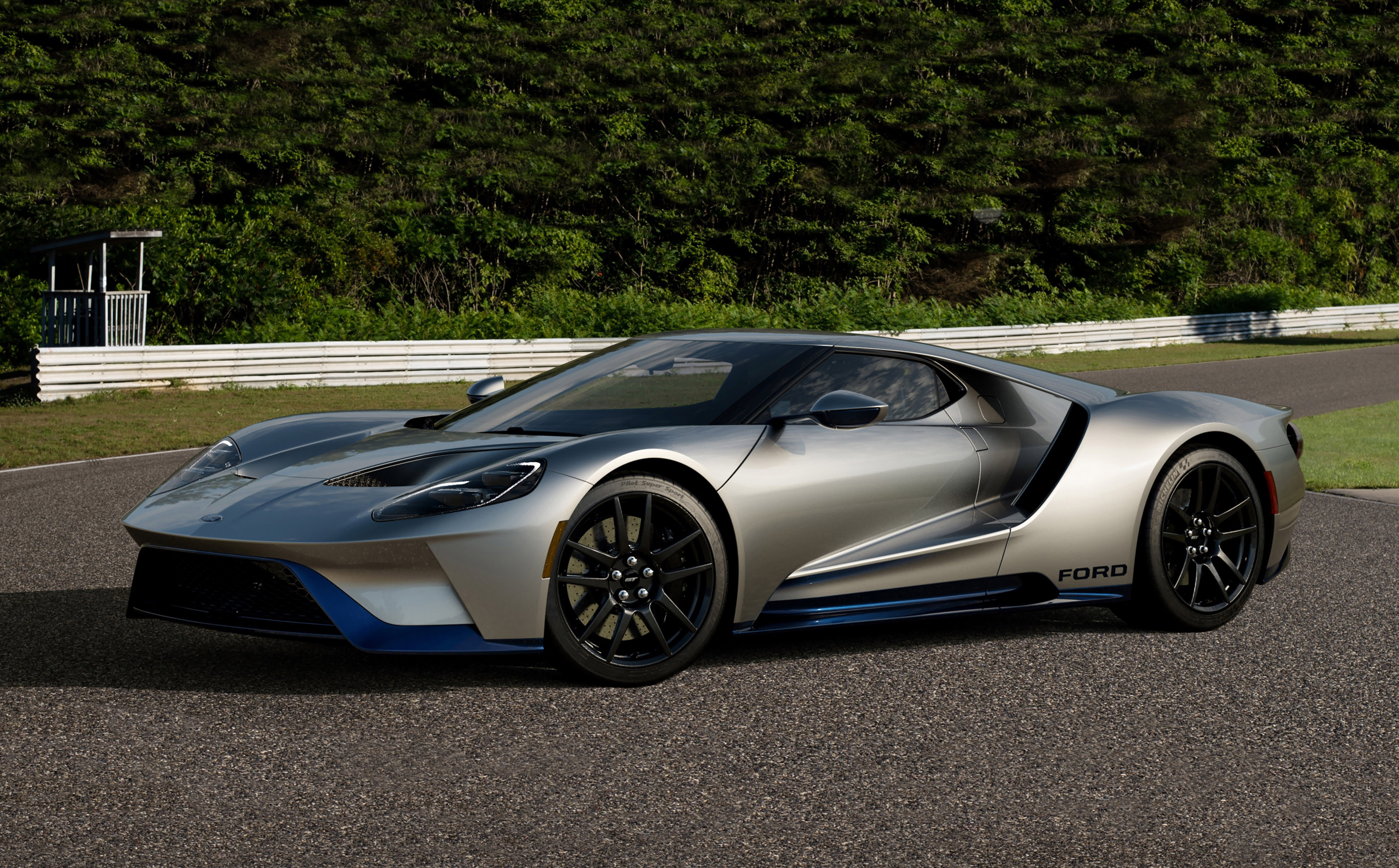
12. **Ford Taurus SHO (1997)**Let’s zoom into the 1997 Ford Taurus SHO, or “Super High Output” version, as it was so powerfully known. This was definitely a performance-focused take on the usually mild-mannered regular Taurus sedan. And while it housed a truly potent Yamaha-built V6 engine under its hood, the SHO’s styling, well, let’s just say it wasn’t exactly setting the world on fire. The standard Taurus was known for its rather conservative design, and the SHO, unfortunately, didn’t break any new ground in the looks department.
This car was a bit of an enigma. It didn’t quite get the massive recognition it deserved, largely because of its rather mundane exterior that completely masked the high-performance beast lurking beneath the hood. It was like a superhero trying to blend in with a bland business suit – you just wouldn’t expect such power from such an unassuming package. It was a true wolf in sheep’s clothing, and often overlooked for its stealthy power.
But for today’s discerning collectors, the Taurus SHO is now revered as an absolute hidden gem. It holds a very special place in automotive history as one of the very first affordable sedans to deliver truly impressive performance credentials. Its brilliantly understated appearance is precisely what makes it a fantastic “sleeper car” – one that definitely doesn’t look fast, but, oh boy, it absolutely is!
The sheer rarity of the SHO, combined with its seriously unique performance capabilities, makes it an incredibly intriguing and highly sought-after choice for enthusiasts. It’s a car that defies expectations and rewards those who look beyond the surface, proving that true power doesn’t always need to shout to be heard.
Car Model Information: 2018 Ford Taurus Limited
Name: Ford Taurus
Caption: 2010 Ford Taurus Limited
Manufacturer: Ford Motor Company
Production: October 1985 – October 2006,May 2007 – March 2019
ModelYears: 1986–2019 (2007 sold only to fleets)
Class: Mid-size car
Layout: Transverse engine,front-engine, front-wheel drive,Transverse engine,front-engine, all-wheel drive
Predecessor: Ford LTD (North America)
Successor: Ford Taurus X
Categories: 1980s cars, 1990s cars, 2000s cars, 2010s cars, All-wheel-drive vehicles
Summary: The Ford Taurus is an automobile that was manufactured and marketed by the Ford Motor Company in the United States from 1985 to 2019. From 1985 to 2009, Ford marketed the Taurus alongside its rebadged variant, the Mercury Sable. Four generations of the high-performance version (named the Ford Taurus SHO) were also manufactured from 1988-1999 and 2009-2019.
The original Taurus was a milestone for Ford and the American automotive industry, as the first automobile at Ford designed and manufactured using the statistical process control ideas brought to Ford by W. Edwards Deming, a prominent statistician consulted by Ford to bring a “culture of quality” to the enterprise. The Taurus had an influential design that introduced new features and innovations.
In the late 1990s and early 2000s, sales of the Taurus declined as it lost market share to Japanese mid-size sedans and as Ford shifted resources towards developing SUVs. The Taurus was withdrawn after the 2007 model year, with production ending on October 27, 2006. As part of a model line revision, the Taurus and the larger Ford Crown Victoria were to be replaced with the full-size Five Hundred and mid-size Fusion sedans; the Taurus station wagon was replaced with the Ford Freestyle wagon, branded as a crossover SUV. During the 2007 Chicago Auto Show, the nameplates of the Taurus and Sable were revived, intended as 2008 mid-cycle revisions of the Five Hundred. The Freestyle was renamed the Ford Taurus X. For the 2010 model year, Ford introduced the sixth-generation Taurus, marking a more substantial model update, alongside the revival of the Taurus SHO; in 2013, the Ford Police Interceptor Sedan was introduced as a successor for its long-running Crown Victoria counterpart.
From 1985 to 2007, the Taurus was a mid-size car, offering front-wheel drive. Initially built on the DN5 platform (renamed the DN101 platform in 1995 and the D186 platform in 1999), the Taurus became a full-size car in 2007, adopting the Volvo-derived D3 platform, offering front- or all-wheel drive. The Taurus was produced as a four-door sedan through its entire production, with a five-door station wagon offered from 1986 to 2005.
All generations of the Taurus were assembled by Chicago Assembly on Chicago’s South Side. Prior to its 2006 closure, Atlanta Assembly also produced both the Taurus and Sable. From its 1985 launch to its initial withdrawal following the 2007 model year, Ford assembled 7,519,919 examples of the Taurus. The fifth best-selling Ford nameplate in North America, the Taurus has been surpassed only by the F-Series, Escort, Model T, and Mustang. Between 1992 and 1996, the Taurus was the best-selling car nameplate in the United States, overtaken by the current title holder in 1997, the Toyota Camry.
Get more information about: Ford Taurus
Buying a high-performing used car >>>
Brand: Ford Model: Taurus
Price: $17,051 Mileage: 92,680 mi.
Read more about: Remember These? The 11 Everyday 1985 Cars That Are Now Absolute Classics You’ll Wish You Still Had

13. **Chevrolet Caprice (1995)**The 1995 Chevrolet Caprice! For a long, long time, this was the quintessential standard American sedan, a familiar sight on every street corner. But by the mid-90s, with automotive tastes shifting, it was frankly starting to look a little… outdated. With its decidedly bulky frame and undeniably boxy design, the Caprice seemed to be stubbornly clinging to a bygone era when massive sedans still reigned supreme.
It earned a bit of a reputation for being, shall we say, a tad dull, perhaps a little underpowered, and honestly, it just lacked the vibrant appeal that many other American cars were boasting at the time. It was a no-frills, get-the-job-done kind of car, which, while practical, didn’t exactly ignite passion in car enthusiasts.
Yet, despite all these initial shortcomings, the Caprice has, in recent years, magically gained a significant cult following! Today, it’s genuinely valued for its commanding presence on the road and its fantastic retro appeal. It truly represents the magnificent tail end of the “big American sedan” era, just before the industry fully pivoted to smaller, more fuel-efficient cars. It’s a living testament to a particular moment in time.
Collectors now deeply appreciate its classic design, and it has undoubtedly become a wonderfully nostalgic piece of automotive history. As fewer of these magnificent beasts remain cruising our highways, the Caprice has rightfully earned a spot in the hearts of those who fondly remember a time when, for American cars, bigger truly was still better.
Car Model Information: 1994 Chevrolet Caprice Classic
Name: Chevrolet Caprice
Caption: Chevrolet Caprice PPV
Manufacturer: unbulleted list
Production: unbulleted list
ModelYears: unbulleted list
Predecessor: unbulleted list
Class: Full-size car
Platform: unbulleted list
Layout: FR layout
Categories: 1970s cars, 1980s cars, 1990s cars, 2000s cars, 2010s cars
Summary: The Chevrolet Caprice is a full-size car produced by Chevrolet in North America for the 1965 through 1996 model years. Full-size Chevrolet sales peaked in 1965, with over a million units sold. It was the most popular car in the U.S. in the 1960s and early 1970s, which, during its production, included the Biscayne, Bel Air, and Impala.
Introduced in mid-1965 as a luxury trim package for the Impala four-door hardtop, Chevrolet offered a full line of Caprice models for the 1966 and subsequent model years, including a “formal hardtop” coupe and an Estate station wagon. The 1971 through 1976 models are the largest Chevrolets built. The downsized 1977 and restyled 1991 models were awarded Motor Trend Car of the Year. Production ended in 1996.
From 2011 until 2017, the Caprice nameplate returned to North America as a full-size, rear wheel drive police vehicle, a captive import from Australia, built by General Motors’s subsidiary Holden. The police vehicle is a rebadged version of the Holden WM/WN Caprice. The nameplate also had a civilian and police presence in the Middle East from 1999 until 2017, where the imported Holden Statesman/Caprice built by Holden was marketed as the Chevrolet Caprice in markets such as Saudi Arabia and the UAE.
Get more information about: Chevrolet Caprice
Buying a high-performing used car >>>
Brand: Chevrolet Model: Caprice
Price: $275,000 Mileage: 950 mi.
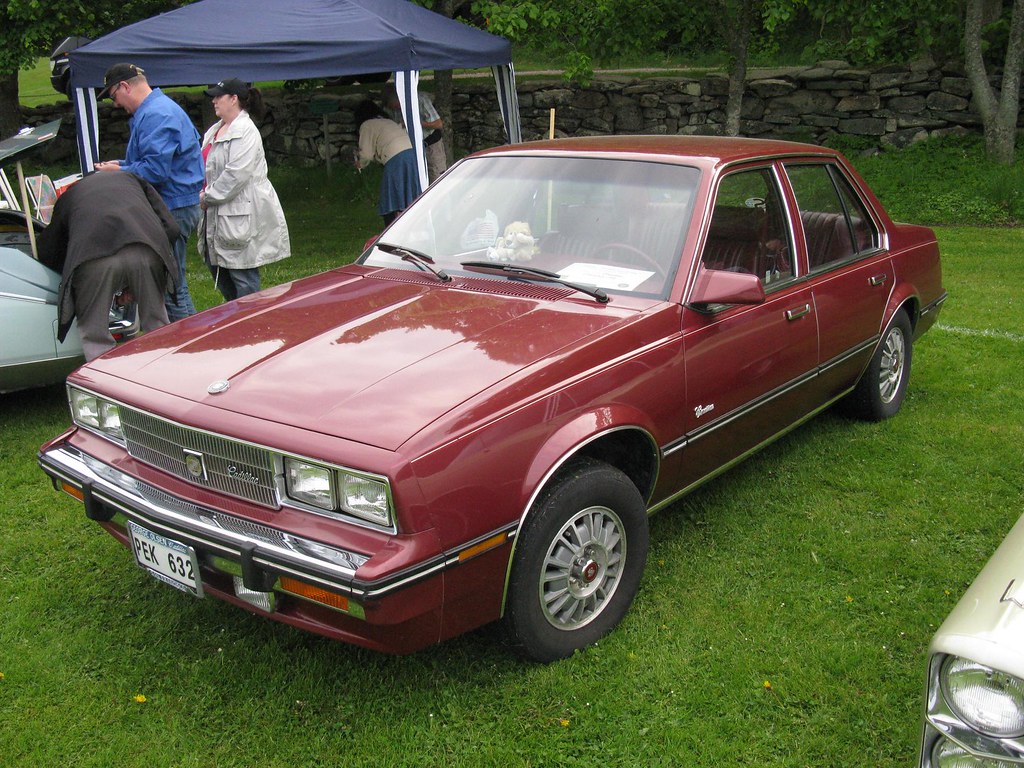
14. **Cadillac Cimarron (1981–1988)**And now, for a true legend (or perhaps, a cautionary tale) in American automotive history: the Cadillac Cimarron. Introduced in the early 1980s, this compact luxury car was designed to appeal to those who loved the elegance of the Seville but craved something a little smaller. Unfortunately, it completely missed the mark aesthetically. Its plain, uninspired design simply couldn’t live up to Cadillac’s revered reputation for opulent elegance and sophisticated style. It ended up looking far more mundane than genuinely luxurious.
Intended to bravely compete in the burgeoning compact luxury market, the Cimarron was, in essence, little more than a rebadged Chevrolet Cavalier. This lack of unique styling and genuine Cadillac identity made it incredibly forgettable, almost a phantom in the luxury car segment. Its launch was a testament to the idea that slapping a premium badge on a lesser car isn’t always a recipe for success, especially not for a brand synonymous with grandeur.
Despite its disappointing initial sales and ultimate discontinuation, the Cimarron has, surprisingly, gained a unique collectible status among classic car lovers. It symbolizes a crucial, albeit difficult, period for Cadillac as the brand struggled to adapt to changing market demands for smaller, more efficient vehicles without sacrificing its core luxury identity. Cadillac ultimately managed to sell 152,245 units throughout its production, proving that even a controversial car can find its devoted audience.
The Cimarron’s legacy serves as a compelling, albeit stark, reminder that brand prestige alone isn’t enough when the design fails to convey the expected image of luxury and distinction. It stands as a fascinating, and perhaps slightly awkward, piece of automotive history, a quirky collectible that offers a glimpse into a brand’s experimental, and sometimes flawed, attempts to evolve. It’s a car that teaches us that every grand marque has its bumps in the road, and sometimes, those bumps become surprisingly cherished.
So there you have it, folks! We’ve taken a wild ride down the road less traveled, exploring a fascinating collection of American cars that dared to be different, even if that difference initially came with a hefty dose of “ugly.” From the unapologetically oddball Rampage to the stealthy power of the SHO, and the wonderfully awkward Cimarron, these vehicles prove that beauty truly is subjective, and sometimes, the most peculiar designs carve out the most enduring legacies. These cars, once ridiculed, now stand as proud, quirky symbols of American automotive history, each with a story that’s far more compelling than just skin-deep aesthetics. They remind us that charm can be found in the most unexpected places, even in a boxy sedan or a bubble-shaped compact.


